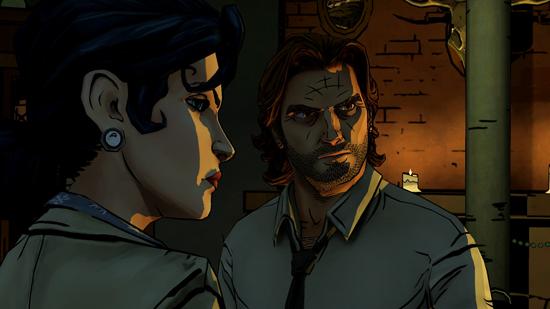 Image source: N3rdabl3.co.uk.
Image source: N3rdabl3.co.uk.
Earlier this semester, I discussed the way Once Upon a Time, particularly in its first season, played with Disney-inspired costuming to evoke nostalgia for Disney-tinged fairytales even as it valorized the present over the past. As a follow-up, and as Viz moves towards consideration of video games, I want to look at a more recent work with similar themes: the critically acclaimed fairy-tale-noir adventure game, The Wolf Among Us. In this game, the player takes on the role of a reformed Big Bad Wolf (known, now, as Bigby), who solves a series of gruesome mysteries with the help of his potential love-interest, Snow White. Specifically, I will look at three costumes associated with Snow. Like those worn by Once’s Snow White, these costumes each present a different way in which we can view the past. Unlike those in Once, these costumes trouble any clear distinction between our modern lives and the medieval-themed fairy tales that underwrite them. Instead of encouraging us to celebrate our modernity, The Wolf Among Us troubles our neat divisions between the present and the past, asking us how we use the past to think about, or act in, the present. (Content Warning: the discussion below, like the game, deals with prostitution and disturbing sexual power dynamics.)